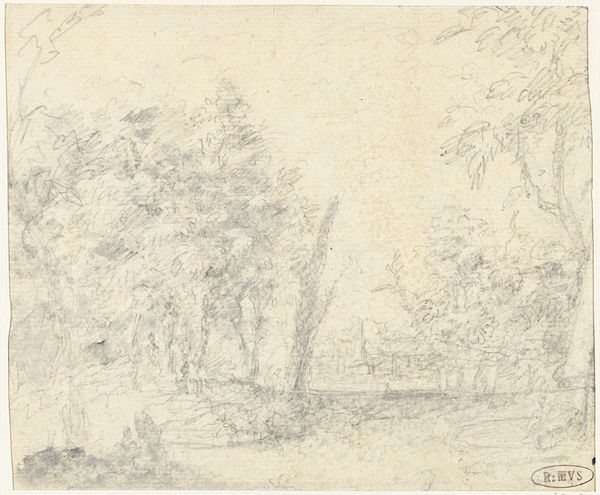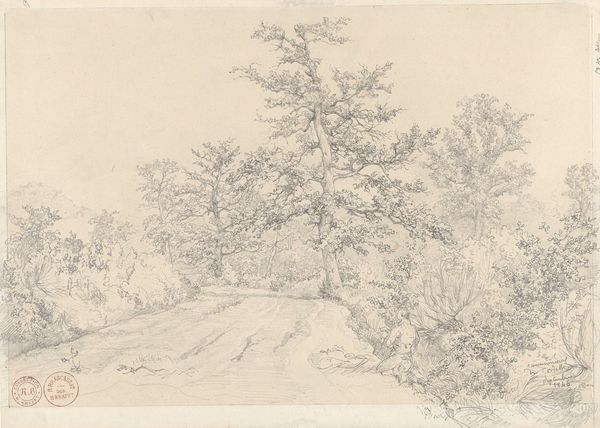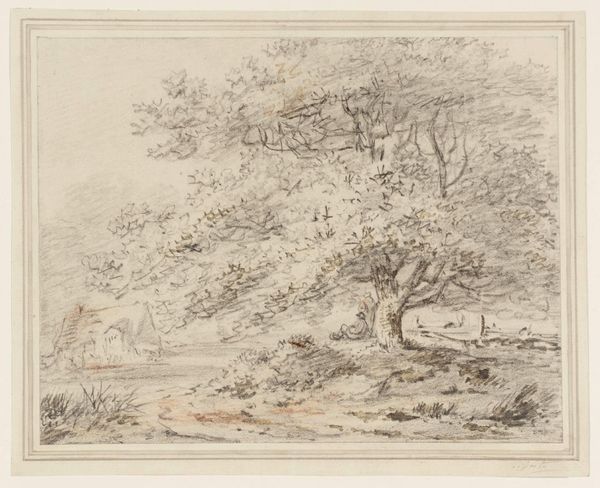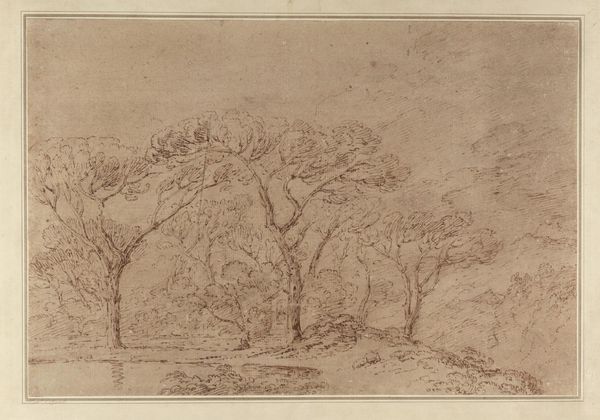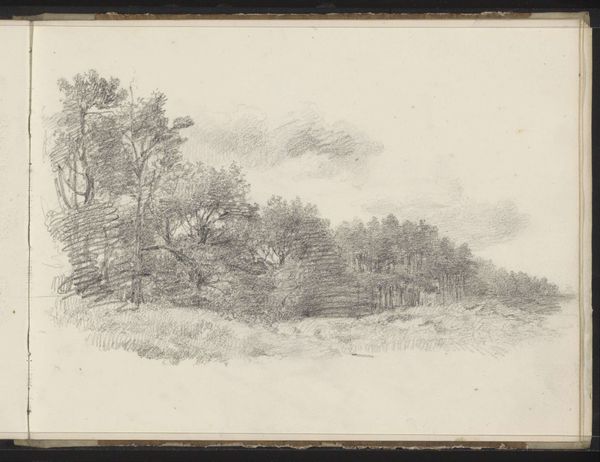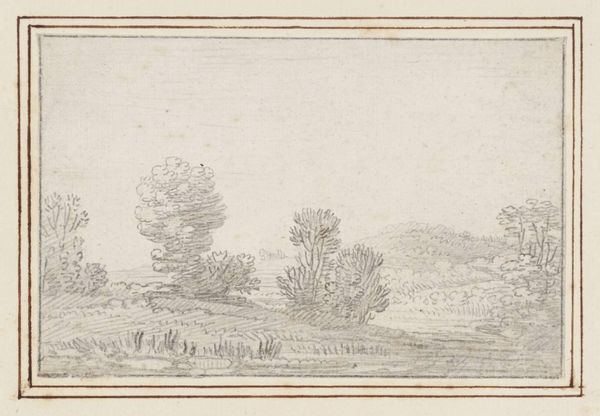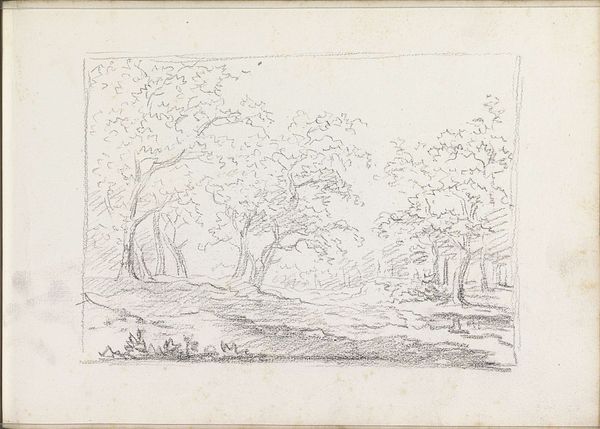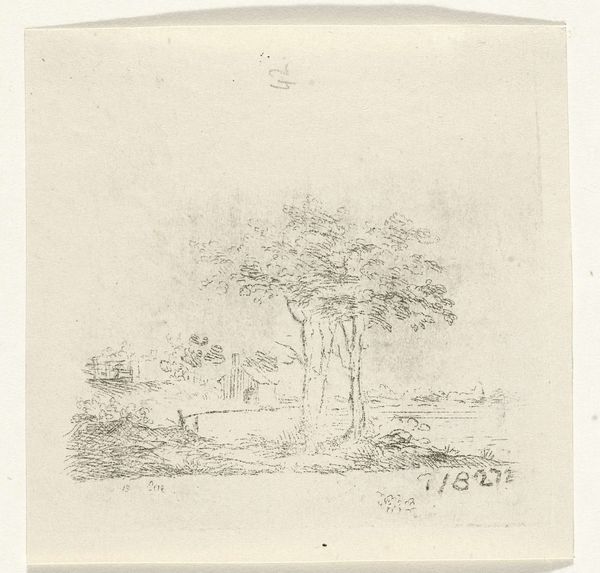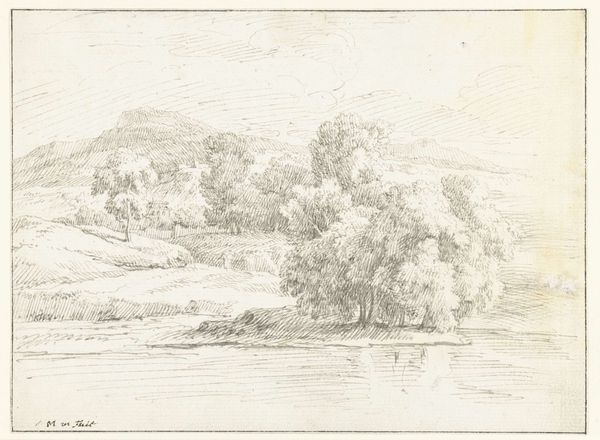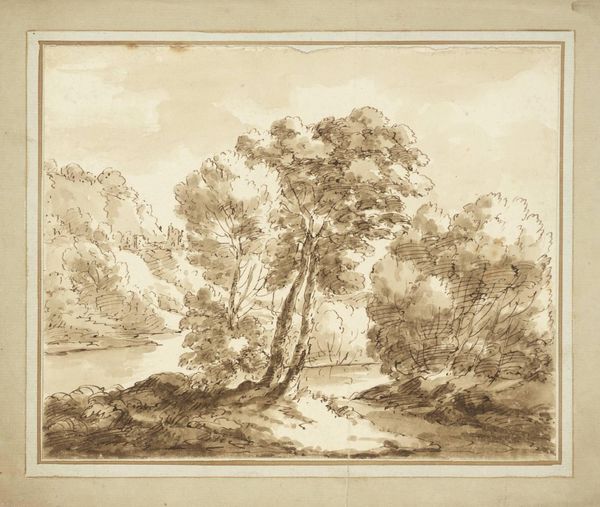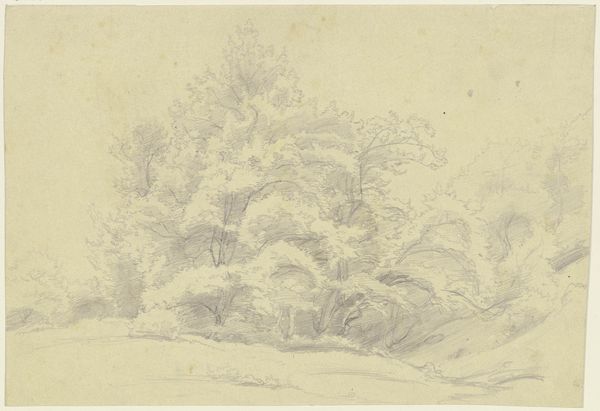
drawing, pencil
#
drawing
#
baroque
#
pencil sketch
#
landscape
#
etching
#
form
#
pencil
#
line
#
watercolor
Dimensions: height 97 mm, width 194 mm
Copyright: Rijks Museum: Open Domain
Curator: Standing before us is a piece attributed to Claude Lorrain, entitled "Enkele hoge bomen voor een open veld," which translates to "Several tall trees before an open field." It's estimated to have been created sometime between 1610 and 1680. Editor: It has a certain fragile beauty, doesn't it? So understated, just pencil on what looks like simple paper. The trees have a hazy quality; it looks like a memory fading at the edges. Curator: Indeed. Lorrain’s landscape drawings, including this one, were crucial in defining landscape as a serious subject in art. They circulated widely and were emulated, thus impacting public taste and artistic training. Editor: I’m particularly drawn to the economy of means. He wasn't concerned with overtly displaying some rarefied virtuosity. How might his contemporaries have responded to what, in our time, could be seen as 'unfinished' work? Was the sketch meant for his eyes only? Curator: Well, drawings like these often functioned as preparatory studies or independent works, purchased by collectors as keepsakes of the picturesque Grand Tour, reflecting social status and education. So their presence here signals shifts in taste. Editor: I see them as documents of labor too. There’s a direct connection to the land, and to the act of observing. What paper would he have used? How were his pencils made? What does the composition, almost centered, reveal about the materials at his disposal, or even his patron's expectations? Curator: Such details remind us that even landscapes, seemingly timeless, are products of a specific social context. Lorrain's influence shaped how the elite perceived and engaged with the natural world for centuries. His art bolstered very specific notions of beauty and taste. Editor: So this small landscape, produced with such apparent ease and light materials, represents in fact a deep intervention into the material world—into agriculture, travel, manufacture. What starts as nature, once mediated by the artist's eye, enters systems of commerce, fashion, and power. Curator: Precisely. It serves as a reminder that landscapes are never simply neutral depictions of nature; they are always mediated by cultural, political, and economic forces. Editor: Thank you; this shifted how I see such images. I'm always in search of that crucial link between artwork, artist, and all of us.
Comments
No comments
Be the first to comment and join the conversation on the ultimate creative platform.
